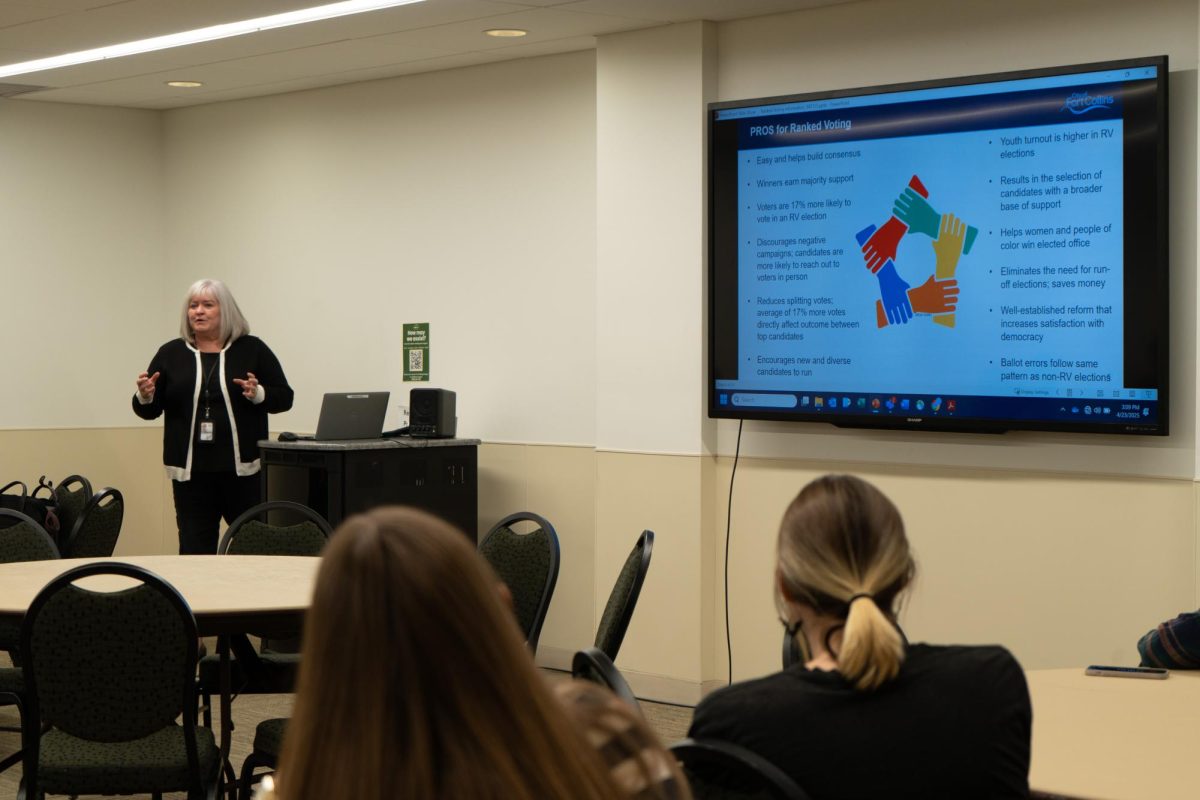Heard anything odd at the MAX bus stops? A cat purring but no cat to be seen? Someone mowing their lawn but not a lawnmower in sight? You aren’t crazy! As a part of the Art in Public Places project, each stop along the MAX bus line corridor was uniquely designed with different artistic elements, and all of them feature sound.
Hidden in the lampposts, speakers play a selection of 22 different sound bites for passersby, according to the Art of the MAX handout. Robert Tully was the lead artist for the project and brought sound artist Jim Green on board. They designed lampposts to house speakers for their sound art elements at each station. The sound art elements include a sprinkler, a cat purring, raking leaves, the ocean and talking parrots.
“There is design in the MAX stops no matter what you do,” said Ellen Martin, visual arts administrator for Art in Public Places. “Someone creates a structure. They have windscreens to help protect the visitors. So the artists on board is one more element of the design team to make it unique.”
I believe public art functions best when it humanizes public space.” -Jim Green, sound artist
Martin said each stop is different from the others. The South Transit Center has transportation-themed panels, while the Prospect Station has historical markers. Martin said each aspect of the stations had unique design elements in mind, from the windscreens to the benches to the light posts themselves.
According to Green’s website, he uses sound art as an innovative way to connect with the public.
“My people-oriented approach uses sound to engage the public with humor and surprise to produce a social, interactive experience,” Green wrote. “I believe public art functions best when it humanizes public space.”
More of Green’s work includes a talking fence located in Denver, talking drinking fountains in Seattle’s SEA-TAC Airport and a laughing escalator in the Colorado Convention Center, according to his website.
Martin said the art aspect of the MAX line was an intention from the beginning.
“I think what’s exciting is that the artist was integrated into the design team and worked with architects and the whole design team to create that experience for the MAX corridor,” Martin said.
Bus driver Scott Thompson said he’s seen many reactions to the sound art at the stops.
“You know, I’ve heard some good things from some of the passengers,” Thompson said. “It is a nice touch for sure. It kind of gives more of a homey feel.”
Meagan Stackpool can be reached at news@collegian.com or on Twitter @MeaganStackpool.







